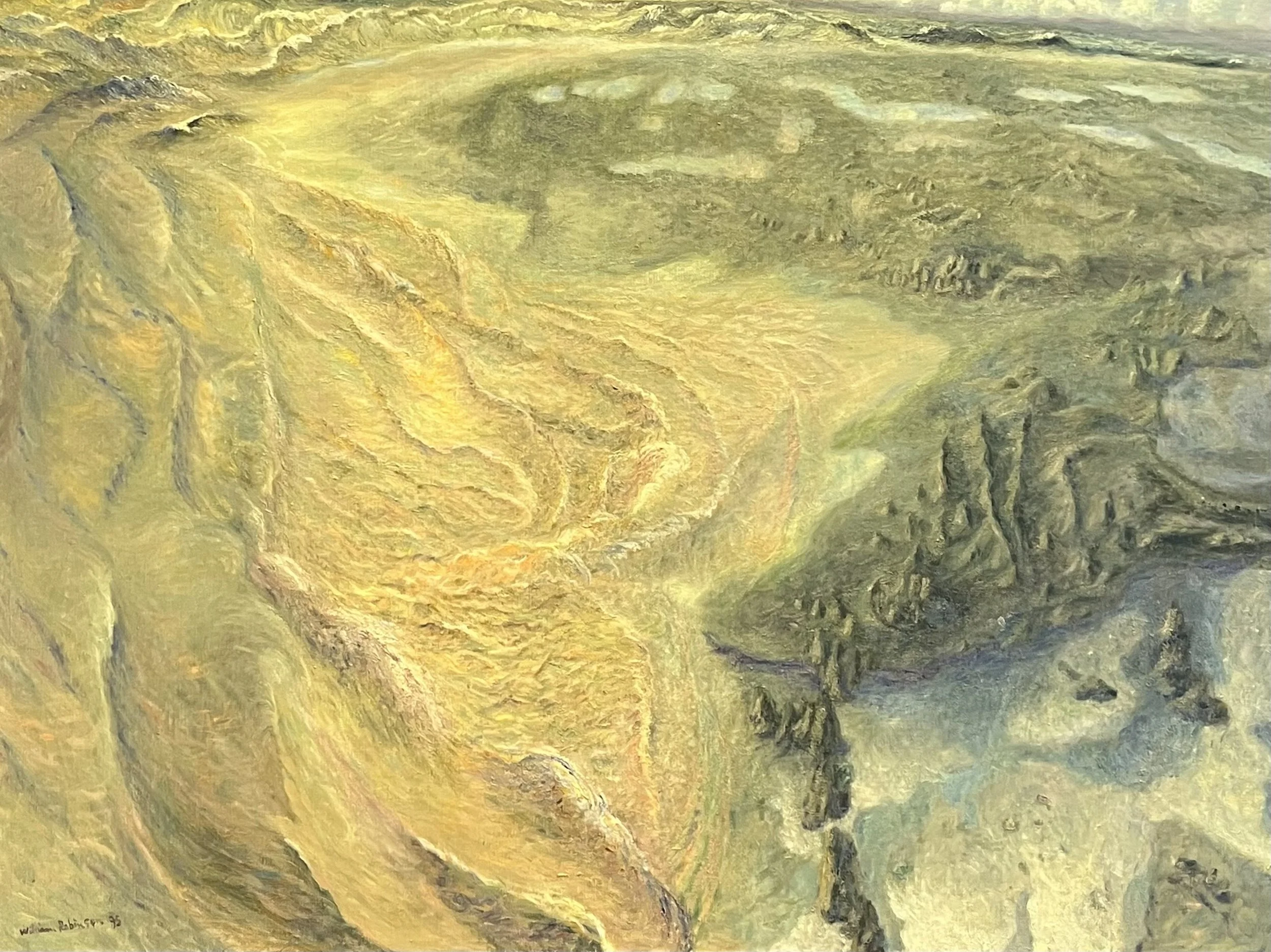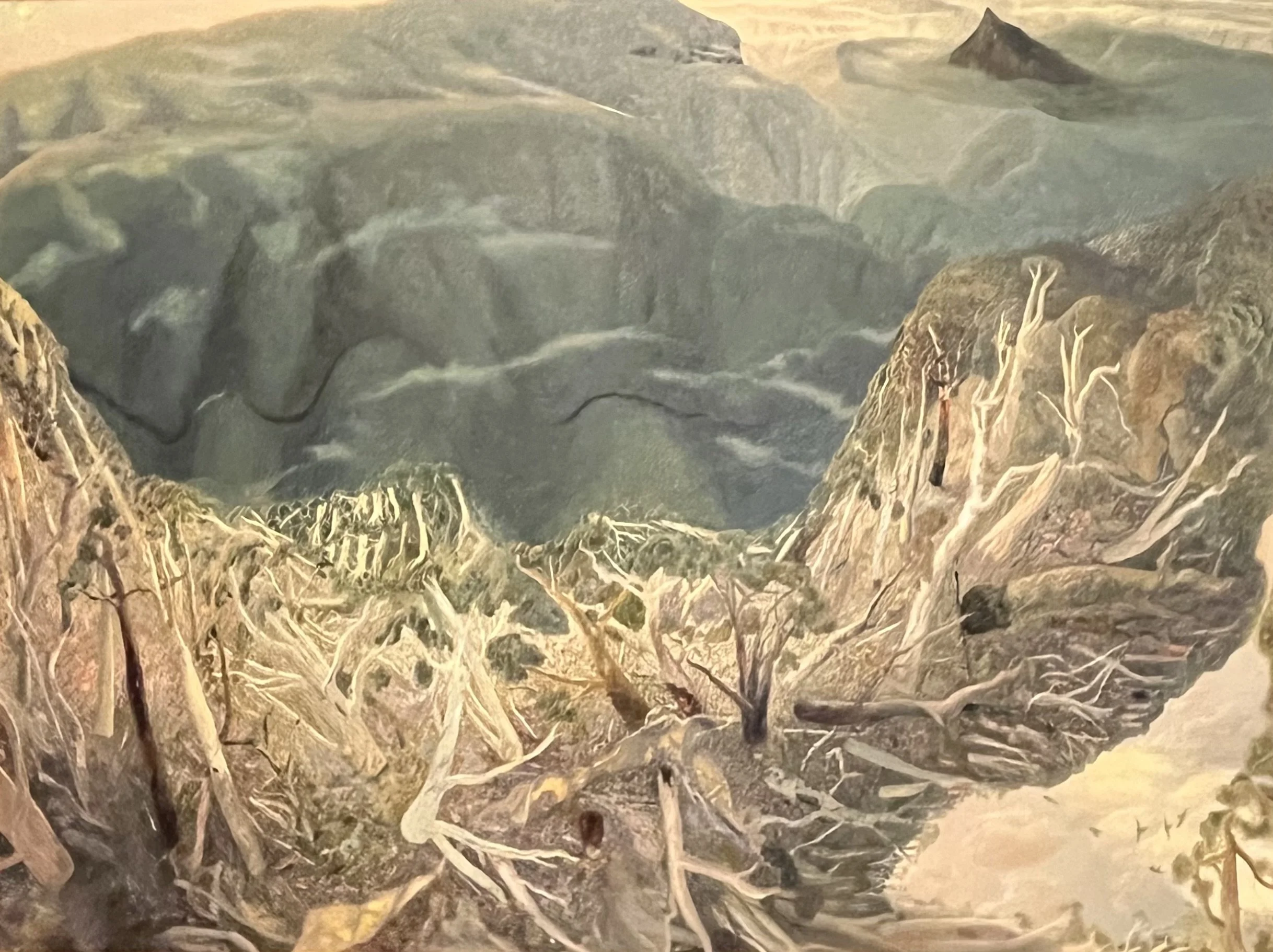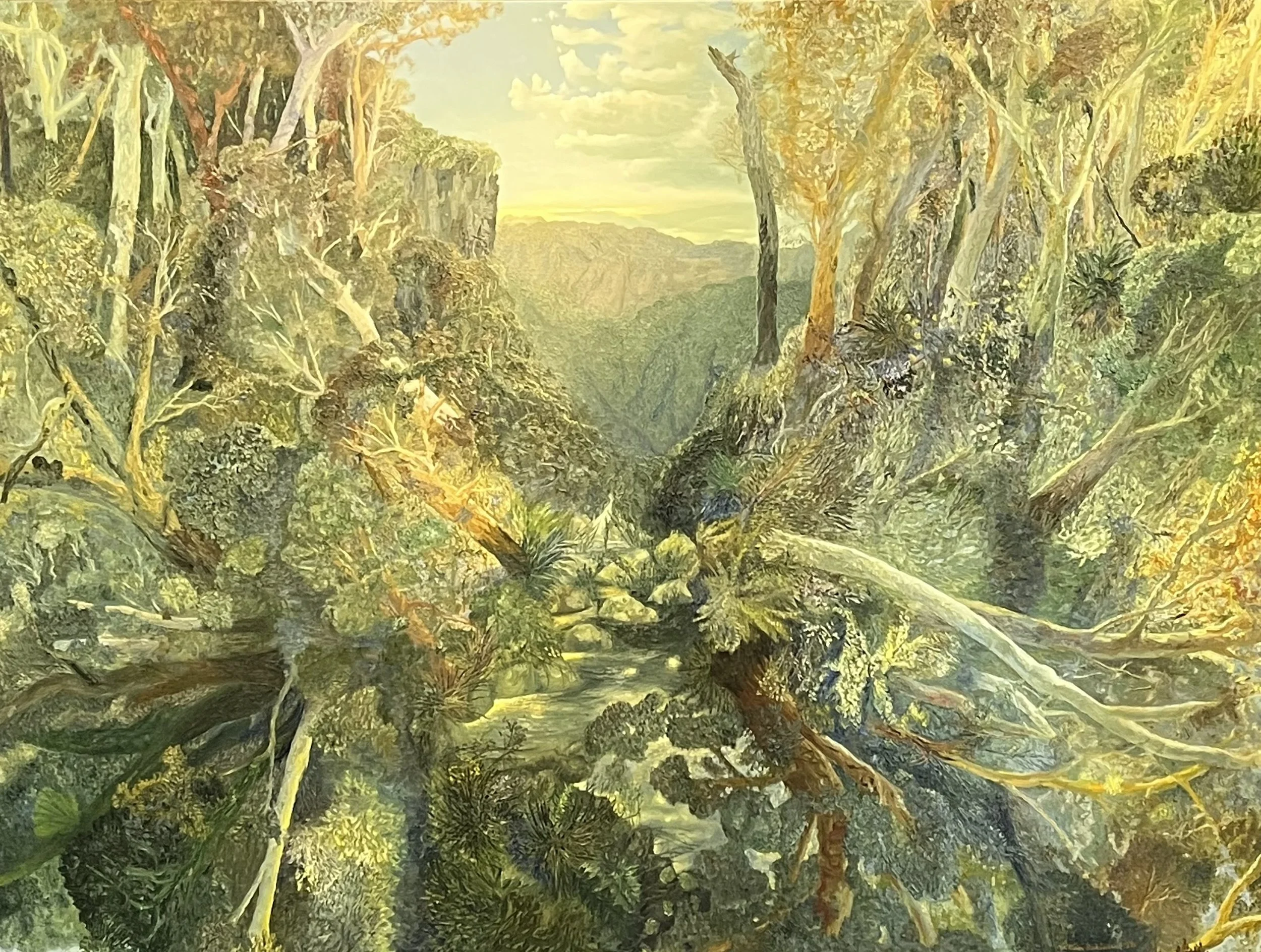William Robinson’s Australian Landscapes


















The Master of Expansive Landscapes: I first encountered the work of William Robinson when I began my PhD at QUT in 2013. At the time, I did not consider myself particularly drawn to traditional landscape painting. Yet Robinson’s canvases (mostly linen, in fact), rooted in the landscapes of Queensland, carried something beyond mere representation. His colours and textures opened up an almost otherworldly dimension, as though the familiar terrain had been reimagined into something vast, infinite, and deeply alive.
Tallanbana with cloud front 1998
Oil on Linen
What struck me most was his use of paint itself. Thick layers of oil on linen gave his works a sculptural quality, adding real depth to the illusion of space. Hills seemed to roll endlessly, skies stretched beyond sight, and valleys folded into each other like currents in a restless sea. While Robinson often depicted recognisable landscapes, his colour palette leaned into the imaginary shadows and glowing tones that transformed reality into something both intimate and transcendent.
The skies in particular fascinated me. He painted them with realism: clouds shifting with the play of light, the shadows of the sun falling with quiet precision. Against this grounded naturalism, the surrounding landscapes seemed to tilt and expand, bending toward the viewer as if to invite them into a world at once familiar and dreamlike.
The sea with morning sun from Springbrook 1996
Oil on Linen
And then there were the details. Tiny brushstrokes, flecks of colour, passages of texture, so that one could stand before a single painting for hours, always discovering something new. For me, it felt like entering an isolated pocket of nature, a place both breathtaking and solitary, where time seemed suspended.
Robinson’s landscapes are not merely views of the world outside. They are experiences, immersive, magical, and layered with an almost spiritual depth.
What stays with me from Robinson’s work is not only the vastness of his landscapes, but the way he bends reality toward something almost metaphysical. His skies and colours remind me that nature is never just seen, it is felt, remembered, and reimagined.
In my own practice, I often seek that same balance between the physical and the imagined, between what the eye perceives and what the spirit senses. Perhaps that is why Robinson’s landscapes resonate so strongly with me. They remind me that art can carry us beyond depiction, into the deeper experience of being present within a landscape.
